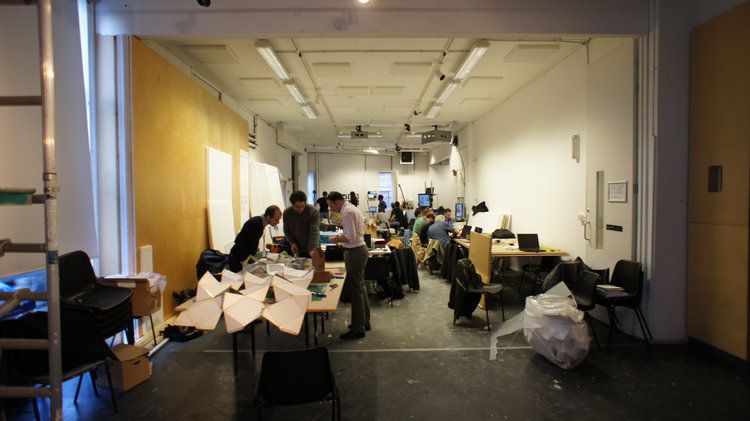Ivan Edward Sutherland, ‘Sketchpad: A Man-Machine Graphical Communication System’
Computational pioneer Mark Weiser stated in 1991 that ‘The most profound technologies are those that disappear. They weave themselves into the fabric of everyday life until they are indistinguishable from them’. This strong statement is relevant in architecture when we talk about the tools that become indistinguishable and embedded into the design. As technology advances and changes with time, architecture is also influenced by the way designs are conceived and buildings are constructed (or even printed with the current state of technology) – architects may need to learn how to create and test their tools.
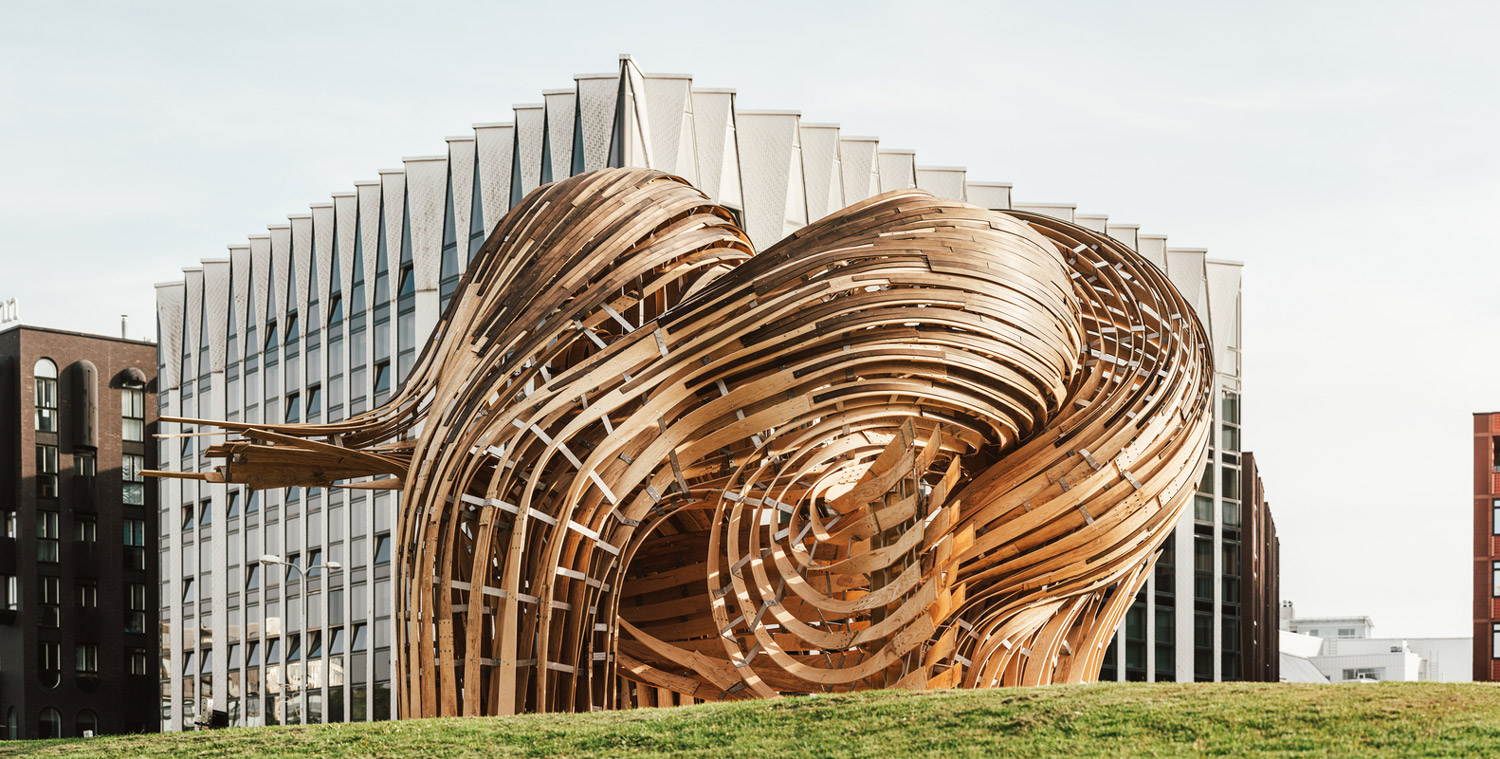
Computational Design, Steampunk Pavilion © Tõnu_Tunnel
The pace of advancement of tools and technology has always existed in a state of fluctuation and been affected by (and itself affecting) architecture of that era. There have been times when developments in tools and technology were relatively static and architecture was changing with new functional, social, and formal models. During this time, new tools were forcibly developed to match the pace of changing architecture. This trend was noticed until the early 80s. After this time, architecture began to be influenced by the tools of other disciplines, and from this, new aesthetics emerged. This trend continued for around 20 years, until the point when architects started ‘scripting’ the tools to create architecture.
The era of computational design emerged and is at its peak today with its fast-changing pace, added complexity, and multi-hierarchical optimizations in design and construction. Robert Aish, Director of Software Development with Autodesk (leading the DesignScript project), and former Director of Smartgeometry (SG), has stressed the development of customized tools for architecture in his introduction ‘First build your tools’ in the recent publication of the AD book ‘Inside Smartgeometry’ (Brady Peters & Terri Peters, 2013).
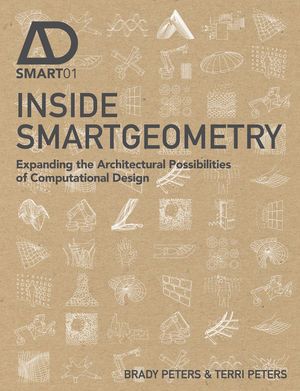
Inside Smartgeometry: Expanding the Architectural Possibilities of Computational Design (AD Smart) Hardcover by Terri Peters & Brady Peters
The core discussion is centered on the ongoing computation design era where generative design is used as a tool to develop analytical models which simulate performance and behavior, as well as create fabrication data for building and construction. These arguments and ideas composed the underlying discussion of Smartgeometry 2013, which took place at Bartlett, University College London from 15th April 2013 to 20th April 2013.
Smart Geometry 2013: Constructing for uncertainty
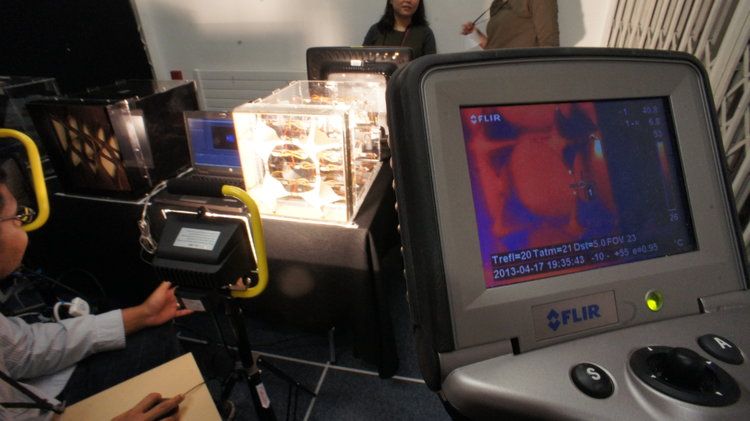
Smartgeometry (sg2013)-London
The theme of this year’s Smartgeometry (sg2013) was ‘Constructing for uncertainty’. This was interpreted and articulated in 10 clusters during the 4-day intense workshop, set out in a number of ways and at multiple operational scales, translated as physical fabrication strategies as well as digital experimentations. The 10 clusters which ran through the 4-day workshop followed by an exhibition at The Bartlett, UCL, were: Adaptive Structural Skins, Computer Vision & Freeform Construction, Thermal Reticulations, Transformational Strategies, Projections of Reality, Digital Intuition and Prediction, (A)synchronous Streams, Volatile Territories, PAD (Probabilistic Architectural Design) and Robotic Foaming.
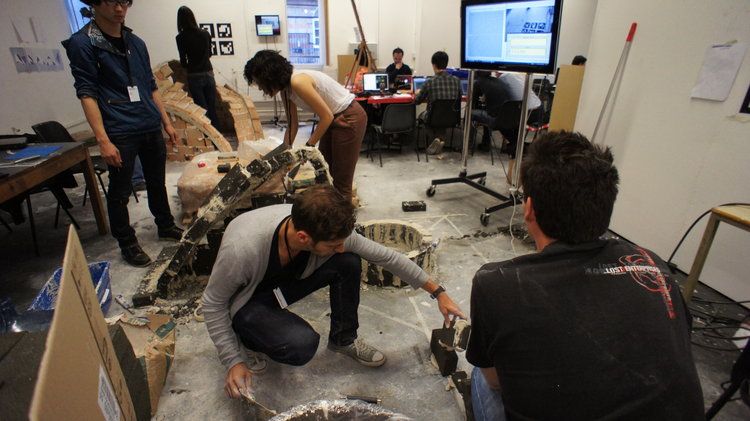
Smartgeometry (sg2013)-london
All clusters had their own customized tools in both digital and fabrication mediums, which were tested and explored during the workshop by the cluster collaborators. These collaborators came from different parts of the world with a diverse range of experience and expertise. The experiments ranged from multi-level real-time optimization strategies, fabrication using robotic arms, advanced data mapping, and curved folding, to new techniques of performance and behavior testing. All these explorations came together in the exhibition as an agglomeration of highly sophisticated and advanced models of the ‘new architecture’ that focuses on computational design and custom tool development.
The discourse of the talk shop and symposium on the 5th and 6th day of sg2013, centered on uncertainty and its interpretations, was noted as talks and lectures by various experts from the disciplines of architecture, computation, and design. The discussions certainly opened some thought-provoking discourse on the subject of uncertainty in architecture at various operational scales and hierarchies; it marked an important year celebrating the 10th anniversary of Smargeometry.
By Sushant Verma
(Courtesy: AFIPS Conference Proceedings, Vol 23, 1963)


